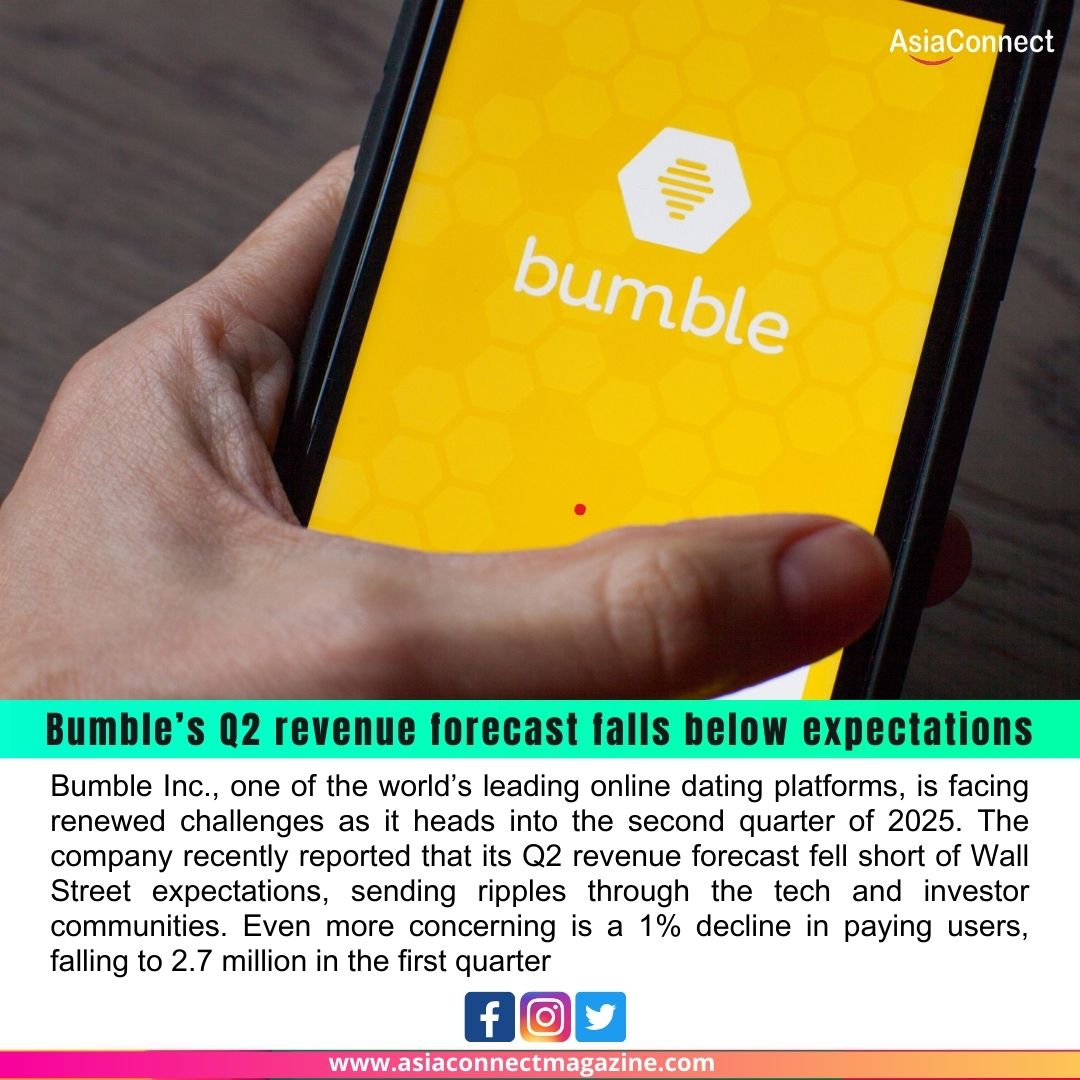Bumble Inc., one of the world’s leading online dating platforms, is facing renewed challenges as it heads into the second quarter of 2025. The company recently reported that its Q2 revenue forecast fell short of Wall Street expectations, sending ripples through the tech and investor communities. Even more concerning is a 1% decline in paying users, falling to 2.7 million in the first quarter — a sign that growth may be plateauing in a competitive and evolving market.
Founded in 2014 with a mission to empower women in dating, Bumble quickly rose to prominence, setting itself apart by giving women the first move. But in a post-pandemic digital landscape marked by changing user behavior and economic uncertainty, Bumble now finds itself navigating headwinds that many tech companies are experiencing.
According to the company’s latest earnings report, Bumble’s projected Q2 revenue did not meet analysts’ expectations, raising concerns about slowing momentum. Revenue growth, which once surged due to increasing demand for digital connection during the pandemic, has shown signs of deceleration. The guidance miss suggests Bumble may be entering a period of adjustment as it shifts strategies to re-engage users and increase monetization.
The most telling figure in the report, however, is the 1% drop in paying subscribers, bringing the total to 2.7 million. While the decline may appear modest, it is significant in an industry where user growth and retention are key metrics. It also marks a rare reversal in a space that had, until recently, been fueled by steady user expansion and strong engagement metrics.
Several factors could be contributing to this downturn. Economic pressures such as inflation and cost-of-living increases may be causing consumers to rethink discretionary spending, including premium subscriptions for dating apps. Additionally, growing competition from other platforms like Hinge, Tinder (also owned by Match Group), and newer niche dating apps could be drawing users away.
Bumble CEO Lidiane Jones, who stepped into the role in early 2024, acknowledged the challenges but remained optimistic about the company’s long-term vision. In a statement to investors, she emphasized Bumble’s plans to invest in product innovation, expand internationally, and enhance user safety — all critical elements to rekindling user trust and interest.
“We are focused on creating deeper, more meaningful connections through enhanced AI tools, personalized recommendations, and safer user experiences,” said Jones. “While short-term fluctuations are part of any company’s journey, our long-term strategy remains strong.”
Industry analysts suggest that Bumble may need to rethink its monetization strategies, possibly by introducing more value-added services or tiered membership models. The company is also exploring opportunities in non-dating verticals, including Bumble BFF and Bumble Bizz, to diversify its user base and reduce reliance on romantic matchmaking alone.
In conclusion, Bumble’s underwhelming Q2 revenue forecast and decline in paying users reflect the broader shifts in the tech and dating app sectors. However, with a renewed focus on innovation, global expansion, and user engagement, Bumble still holds the potential to bounce back and thrive in the long run — but it must adapt quickly to a fast-changing market.





